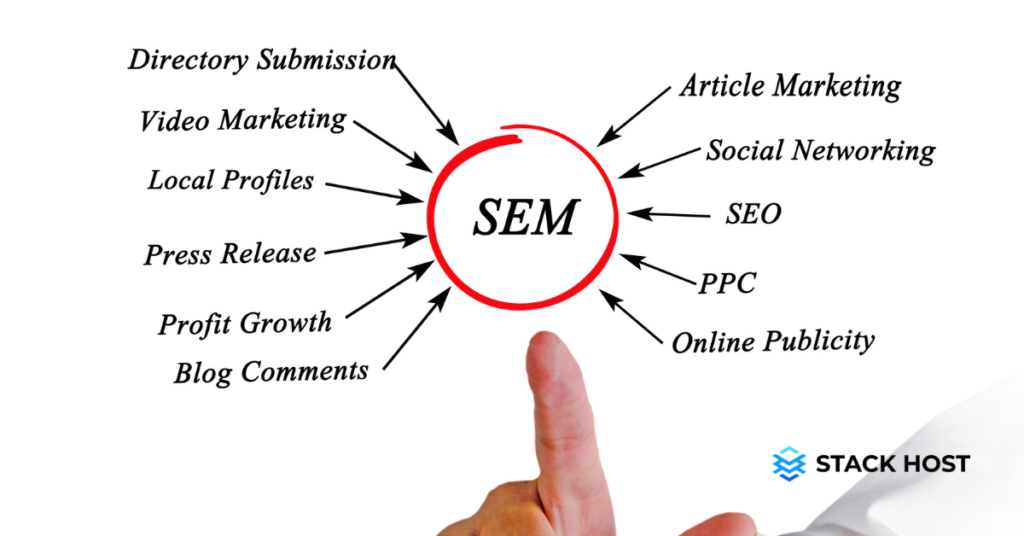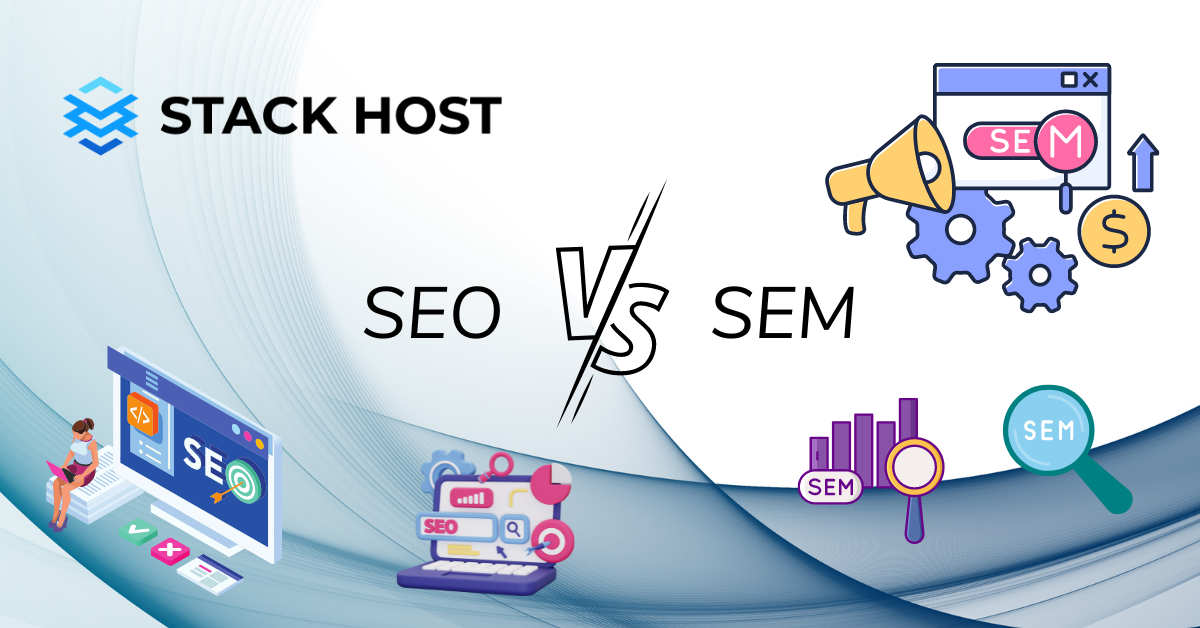Search engine optimization (SEO) and search engine marketing (SEM) are digital marketing tactics that can help your business grow. They each have their advantages and disadvantages, and potential users should understand the differences between the two in order to choose the one that best fits their needs. Read on for a detailed comparison of SEO vs. SEM to help determine which strategy is right for you!
What does SEO stand for?
SEO stands for search engine optimization. As one might guess, this is optimizing your content to rank higher on search engine results pages (SERPs). It is a long-term marketing strategy that focuses on increasing traffic to your website through organic search results.

SEO is a great way to grow your online presence without spending money on paid ads. However, it does take time to see results from this strategy! SEO can be broken down into a few key areas, including content, backlinks, technical optimization, and more. If you’re looking for a reputable SEO company, check out the free SEO review tool from Major Brands. This tool offers a free review of your website’s current SEO performance and tips on improving it.
What is SEM?
SEM stands for search engine marketing. This is the process of optimizing your paid ads to rank higher in search engine results pages (SERPs). SEM focuses on increasing traffic to your website through paid ads, such as search engine ads (SEO) or social media ads (SMM).

While SEO is a long-term marketing strategy that doesn’t focus on paid ads, SEM is a short-term marketing strategy that heavily relies on paid ads. Paid ads are great for quickly increasing website traffic, but they come with a cost!
SEM can be broken down into a few key areas, including ad creation, ad targeting, ad placement, and more. If you’re looking for a reputable SEM company, check out the free SEM review tool from Major Brands. This tool offers a free review of your website’s current SEM performance and tips on improving it.
What is the difference between SEO and SEM?

SEO and SEM are two different strategies for marketing your business online. SEO is a long-term marketing strategy that focuses on increasing traffic to your website through organic search results.
SEM is a short-term marketing strategy that heavily relies on paid ads to bring traffic to your website. While both SEO and SEM can be used to drive traffic to your website, they each do so in different ways.
For example, SEO focuses on getting people to your website through natural search results. You can rank higher in these results by creating high-quality content, linking to other relevant websites, etc. On the other hand, SEM focuses on getting people to your website through paid ads. A common example is Google AdWords, a platform that lets you create ads for people to see when they search for specific keywords.
SEM
Pros
– Paid advertisements will bring traffic to your website quickly and in large numbers. This can be incredibly beneficial if you are hosting a sale or trying to reach a wide audience in a short amount of time.
– You can target specific audiences using paid advertisements. This means that you can focus your ad campaigns on people who are more likely to be interested in your products or services.
– You can track the ROI of your ad campaigns. This means you can track your ad spending by calculating how much your ads bring.
– SEM is a flexible marketing strategy. This means you can quickly scale your ad campaigns and spend as much or as little as you’d like.
Cons
– SEM is expensive. Picking the right keywords and designing compelling ad copy can be tricky, and your ad campaigns will cost much money.
– SEM requires a lot of time and effort. You have to spend much time researching keywords and ad copy and continually tweak your ad campaigns as you learn more about your audience and the best way to reach them.
– You can’t “control” the traffic from your ad campaigns. This means you don’t know who clicks on your ads or if they’ll be a good fit for your website.
SEO
Pros
– SEO doesn’t cost anything extra to start.
– SEO can help your site get discovered without interrupting visitors or displaying annoying ads.
– SEO can lead to more accurate tracking of your website visitors and help you find out who your website visitors are.
– SEO can be done by your in-house team or outsourced to a digital marketing agency.
– SEO can be scaled as your business grows, and anyone can do it.
Cons
– SEO takes time to show results. You can’t expect an immediate increase in traffic after implementing SEO strategies. It can take months or even years for SEO to take effect.
– SEO requires much effort. You have to create quality content that people want to read, and you have to ensure that you follow all of the latest SEO best practices.
– SEO is complicated and difficult to understand. Many businesses hire experts to handle their SEO, and most people don’t know the best SEO practices for their industry or website.
Which is better: SEO or SEM?
For small businesses, it is often recommended to start with SEO and then transition to SEM once the brand has gained more name recognition and more targeted traffic is coming to the website as a result of the efforts with SEO. However, many businesses do both SEO and SEM at the same time.
For larger businesses, it is recommended to do both SEO and SEM simultaneously because they are different strategies that can support each other. SEO is used to increase the brand’s name recognition, while SEM is used to drive quick and immediate traffic. For a new business, it is vital to pick one strategy and focus on it. You don’t want to do both SEO and SEM and do a half-hearted job with both. It is better to pick one strategy and do it well instead of trying and doing both poorly.
SEO and SEM are digital marketing strategies that can drive traffic to a website or webpage. SEO stands for “search engine optimization,” while SEM stands for “search engine marketing.” SEO and SEM aim to get the website to show up on the first page of search engine results for relevant keywords. The difference between these two strategies is that SEO is focused on improving the “on-site” elements. In contrast, SEM is focused on improving the website’s position on the SERPs. SEO and SEM have advantages and disadvantages, and potential users should understand their differences to choose the one that best fits their needs.





